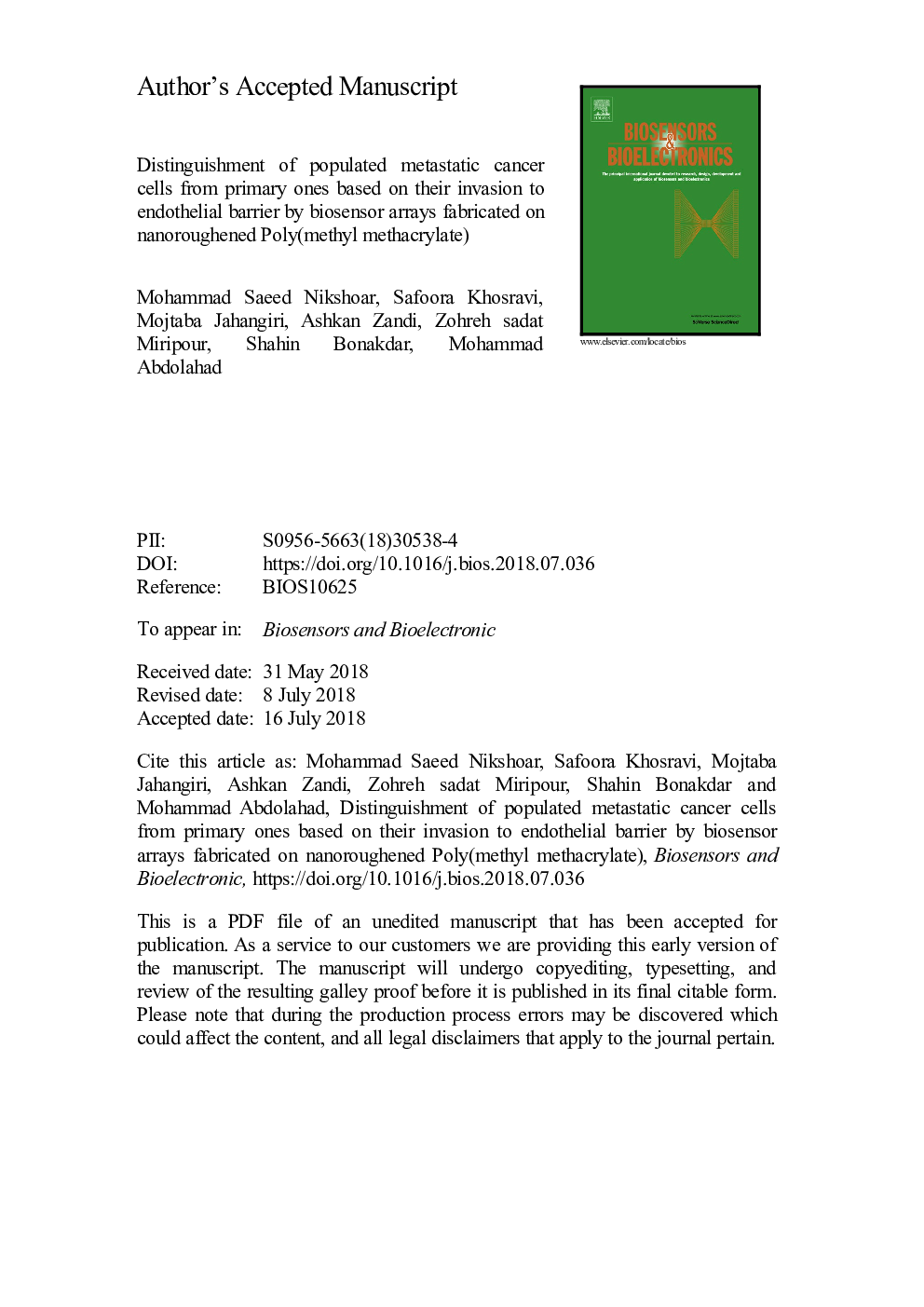| کد مقاله | کد نشریه | سال انتشار | مقاله انگلیسی | نسخه تمام متن |
|---|---|---|---|---|
| 7228917 | 1470914 | 2018 | 21 صفحه PDF | دانلود رایگان |
عنوان انگلیسی مقاله ISI
Distinguishment of populated metastatic cancer cells from primary ones based on their invasion to endothelial barrier by biosensor arrays fabricated on nanoroughened poly(methyl methacrylate)
ترجمه فارسی عنوان
تشخیص سلولهای سرطانی متاستاتیک متاثر از آنهایی که از ابتدای آنها بر اساس حمله آنها به مانع اندوتلیال توسط آرایه های بیوسنسور ساخته شده بر روی پلی متیل متاکریلات نانو ساخته شده است
دانلود مقاله + سفارش ترجمه
دانلود مقاله ISI انگلیسی
رایگان برای ایرانیان
کلمات کلیدی
موضوعات مرتبط
مهندسی و علوم پایه
شیمی
شیمی آنالیزی یا شیمی تجزیه
چکیده انگلیسی
Determining the migratory and invasive capacity of cancer cells as well as clarifying the underlying mechanisms are most relevant for developing biosensors in cancer diagnosis, prognosis, drug development and treatment. Intravasation of metastatic cells into blood stream initiated by their invasion to vascular layer would be a significant characteristic of metastasis. Many types of biochemical and bioelectrical sensors were developed for early detection of metastasis. The simplicity of the setup, the ease of the readout, detection of the trace of rare metastatic cells and the feasibility to perform the assay with standard laboratory equipment are some of the challenges limiting the usability of the sensors in tracing the metastasis. Here we describe a biosensor based on recently reported metastatic diagnosis assay; Metas-Chip, with the assistance of nanoroughened Poly-methyl methacrylate (PMMA) layer to diagnose populated metastatic breast cells from primary cancerous ones. Retraction and detachment of Human Umbilical Vein Endothelial Cells (HUVECs) invaded by metastatic cells as a recently found phenomena is the mechanism of the action. A population of HUVECs would be detached from the gold microelectrodes, patterned on nanoroughened surface, which would lead to large changes in impedance. Here, applying biocompatible and patternable nanoroughened surface instead of using adhesive layers which might produce electrical noises resulted in great sensitivity and detectivity of the sensor. Apart from the tight interaction between endothelial cells and nanocontacts of the electrodes, using low concentration (10%) of tumor cells in this invasion assay, might enhance its application in clinical trials.
ناشر
Database: Elsevier - ScienceDirect (ساینس دایرکت)
Journal: Biosensors and Bioelectronics - Volume 118, 30 October 2018, Pages 51-57
Journal: Biosensors and Bioelectronics - Volume 118, 30 October 2018, Pages 51-57
نویسندگان
Mohammad Saeed Nikshoar, Safoora Khosravi, Mojtaba Jahangiri, Ashkan Zandi, Zohreh Sadat Miripour, Shahin Bonakdar, Mohammad Abdolahad,
